How to Find Your Hair Type
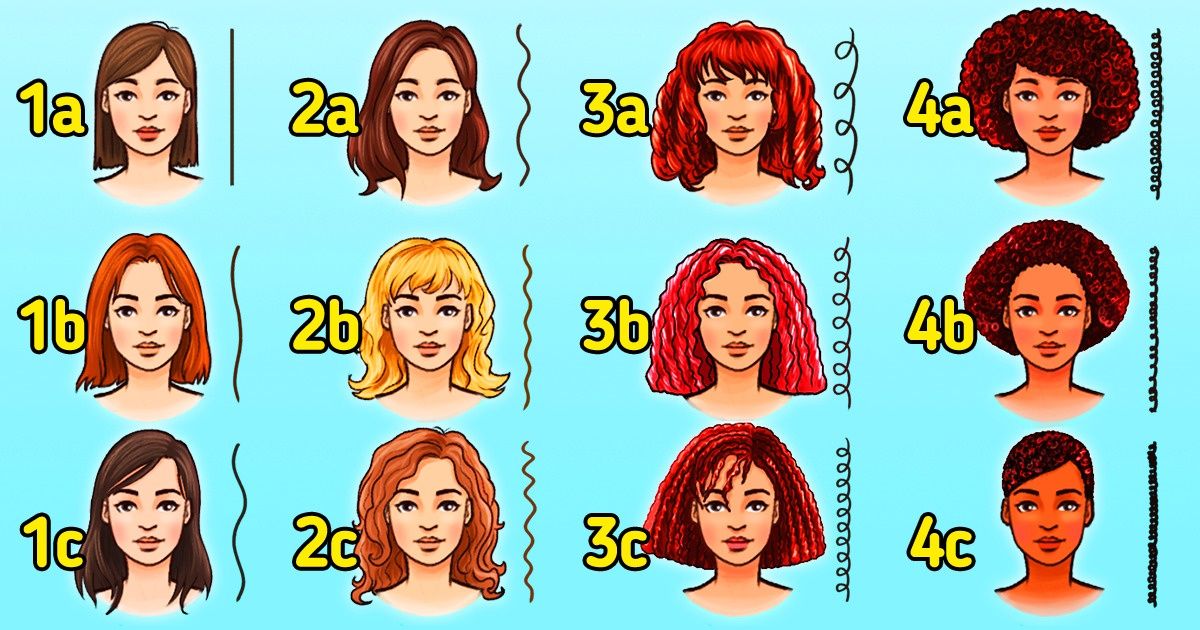
Knowing your hair type can be necessary if you want to know how to take better care of your hair, choose the right products for it, and style it properly. 5-Minute Crafts is ready to tell you about a special defining system that will help you to understand your hair better.
The system of understanding your hair type
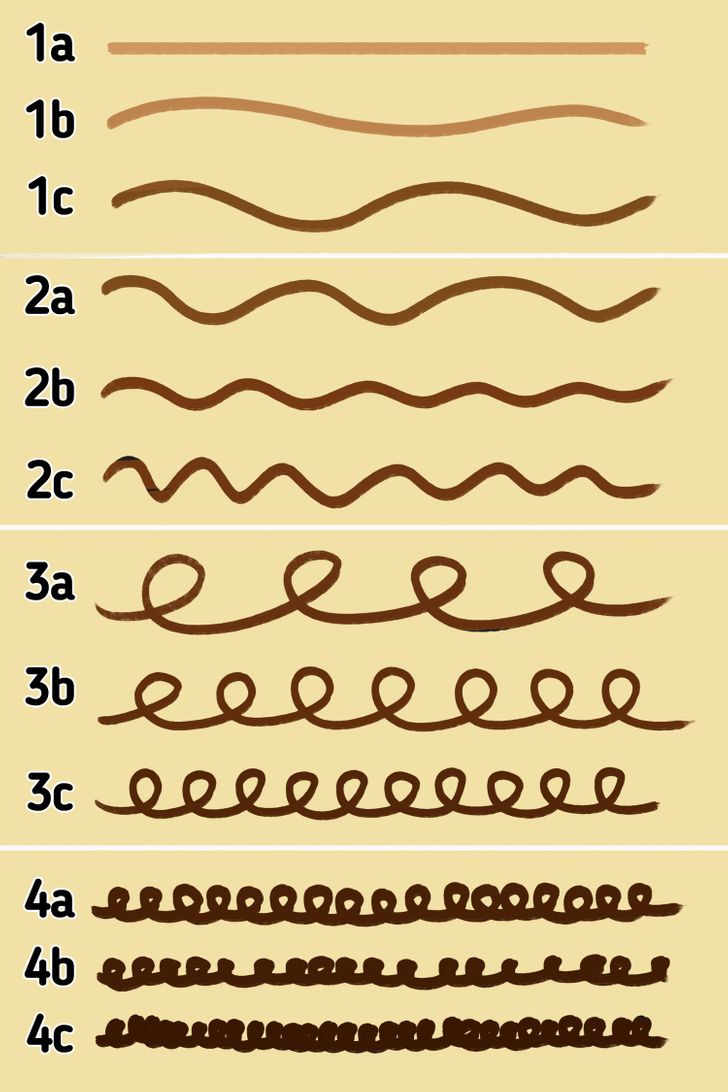
Andre Walker is a famous celebrity hairdresser who came up with a system that defines hair and puts it into 4 different classes and different subcategories.
Type 1: Straight hair
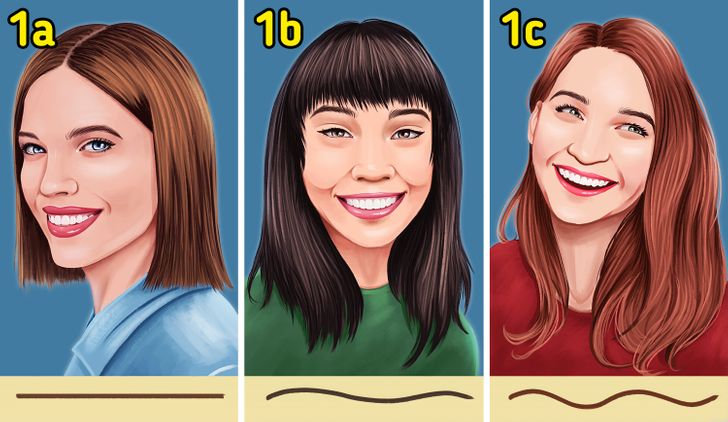
Type 1 hair doesn’t have any natural curl to it. Their texture can range from fine to coarse and thick or thin.
- Type 1a: usually the flattest, thinnest, and very silky in comparison to other straight hair types. It can often lack volume.
- Type 1b: while still very straight, this hair is slightly thicker than type 1a, with some coarse strands and more volume to it.
- Type 1c: this hair is the thickest and the coarsest type of straight hair. It is also more prone to frizz and can be harder to manage.
Type 1 hair can become oily very easily, therefore it’s recommended to not wash your hair very often and to look for washing products that won’t add extra oil to it.
Type 2: Wavy hair
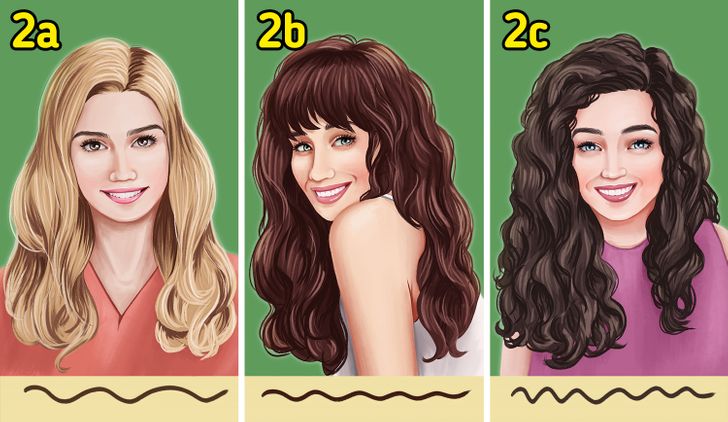
Wavy hair has defined waves that can start from the roots all around the head. The look of this hair can vary from very accurate bends to very fluffy and undefined locks.
- Type 2a: this hair has volume and some slight wave to it. It usually has medium- to lower porosity which defies its frizz. This hair looks flatter and finer than the rest of the hair of this type. It’s also easy to blow it out and straighten it.
- Type 2b: this hair is a bit tighter than type 2a and has beachy waves with almost no bounce. This type is prone to frizz, requiring a proper hair product to manage it.
- Type 2c: this type has deep, well-defined S-waves, looking almost curly. Also very prone to frizz.
It’s recommended to avoid using natural oils after the shower, as they can add grease to your look. You can use them before shower and wash them out with your shampoo. Also, avoid heavy creams and gels, and opt for mousses or light leave-in serums.
Type 3: Curly hair
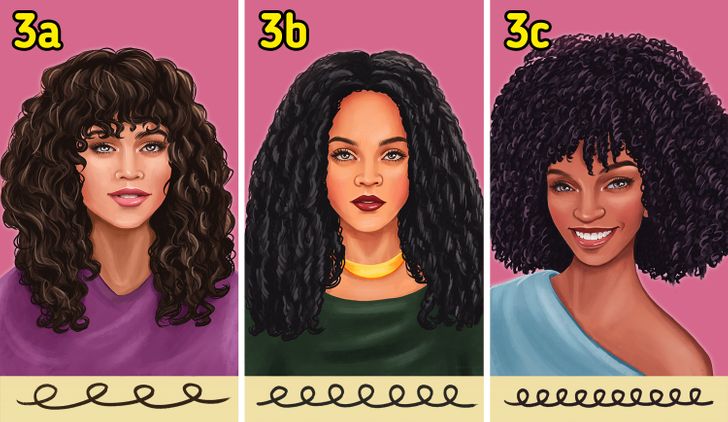
Hair of this type has defined loose ringlets or tight spirals, which might sometimes be difficult to manage. You don’t need to wash this hair every day.
- Type 3a: characterized by loose spiral curls that might have few waves in them. The curls are finer and easier to blow out. However, this hair is prone to frizz and is reactive to humidity, wetness, and dryness.
- Type 3b: there are tighter curls and springy ringlets, which are not very thick or delicate.
- Type 3c: these curls might have a different texture to them — some locks might be corkscrew and others can be tight zigzags. The strands are tightly packed giving your hairstyle volume.
It is recommended that you use products that define the natural curls. It is also better to avoid ponytails as the curls might lose their formation and the hair can become thinner because of them.
Type 4: Coils
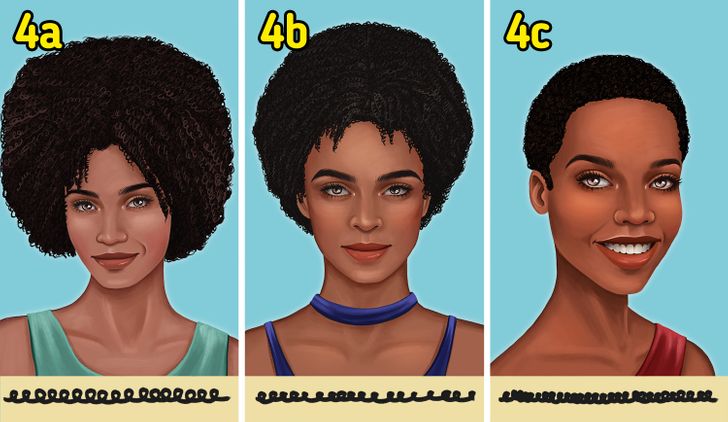
This type of hair is very coily. There can be a mix of textures — tightly coiled, S-shaped, and zigzag-shaped. It is hard to lubricate this hair with scalp oils which makes it very fragile, and prone to dryness and damage.
- Type 4a: this hair has tight, thick, and small coils. They can be more elongated or more shrunken, getting wrapped around themselves.
- Type 4b: the locks of this hair look more like zigzags. This hair is very soft to the touch. However, it is also very fragile and prone to breakage.
- Type 4c: this hair is very tightly coiled with more Z-shaped curls. You might not even see the pattern without stretching it.
You need to be very gentle with hair of this type. It requires a lot of moisture. You can hydrate it by using specialized conditioning masques, butter, and creams.